Hot Air Balloon
The history of hot air balloon is very rich and two century old. From its invention in France by the Montgolfier brothers, Joseph and Ettienne to its present international use. The concept of a contained quantity of lighter than air gas or hot air has undergone many revisions and tests.
They are cheap, clean and safe way of traveling by air.
They do not require traditional airports with long runways for take off.
The modern hot air balloon is made up of three main parts:
ENVELOPE
Envelope is the part of balloon which holds the hot air.
It is constructed from long gores extending from the base of the envelope to the crown are made up of a number of smaller panels. It is sewn into many geometric designs and custom shapes.
It is generally made from heat resistant rip-stop nylon and coated internally with a plastic which helps contain heat.
The skirt at the base of the envelope is coated with fire resistant material to keep the flame from igniting the balloon.
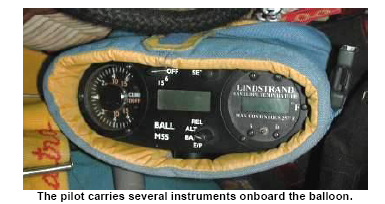
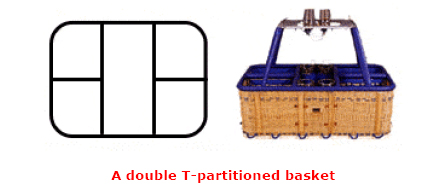


BURNER
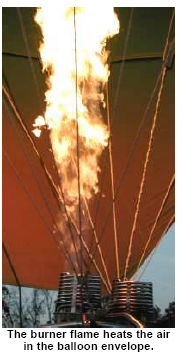
Hot air balloons are based on a very basic principle: warmer air rises in cooler air.Hot air is lighter than air as density of air is reduced after heating.If you actually need to get somewhere, a hot air balloon is a fairly impractical vehicle. You can't really steer it, and it only travels as fast as the wind blows.
HEATING AIR
Modern hot air balloons heat the air by burning propane stored in compressed liquid form, in lightweight cylinders in the basket. The intake hose runs down to the bottom of the cylinder to draw the liquid out. Propane being highly compressed flows quickly through the hoses to the heating coil. The heating coil is simply a length of steel tubing arranged in a coil around the burner.
When the balloonist starts up the burner, the propane flows out in liquid form and is ignited by a pilot light heating the metal tubing. Hot tubing heats the liquid propane flowing through it changing it into a gas before ignition.
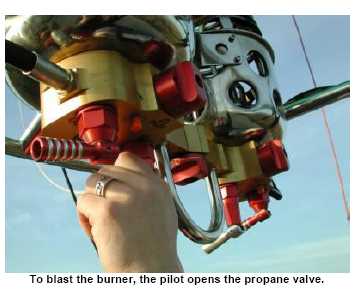
As air becomes hot, its density goes on decreasing. For a given volume of air the effect of gravity on hot air is lesser than that on surrounding cooler air. As a result hot air tends to go higher than cooler air. Relative difference between density of surrounding air and the density of hot air inside the envelope creates the lift. The hot air won't escape from the hole at the bottom of the envelope because buoyancy keeps it moving up. If the pilot continues to fire the burner, the balloon will continue to rise. There is an upper altitude limit since the air becomes so thin that the buoyant force is too weak to lift the balloon. The buoyant force is equal to the weight of air displaced by the balloon, so a larger balloon envelope will generate more lift and also has higher upper altitude limit.
For maneuvering in vertical direction pilot can control the rate of heating of air inside the envelope using control valve of burner. Hot air balloons also have a cord to open the parachute valve at the top of the envelope. When this cord is pulled, some hot air escapes from the envelope decreasing the temperature inside. This causes the balloon to slow its ascent. If the valve is kept open for long enough, the balloon will sink.
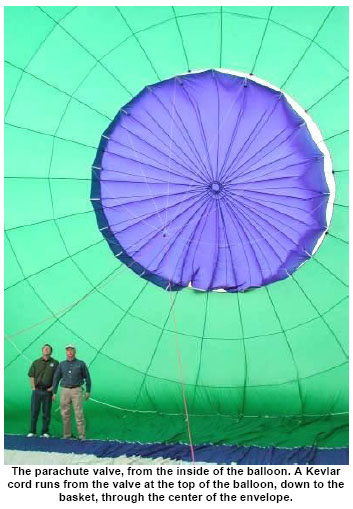
Maneuvering in horizontal direction depends on wind direction and wind speed. Wind blows in different directions at different altitudes. So, by changing the altitude of balloon direction of balloon can be changed. But this is very difficult task. Pilot has to be in regular contact with weather service. Wind speed generally increases with increasing with increasing altitude. So, by varying altitude horizontal speed of balloon can also be changed.
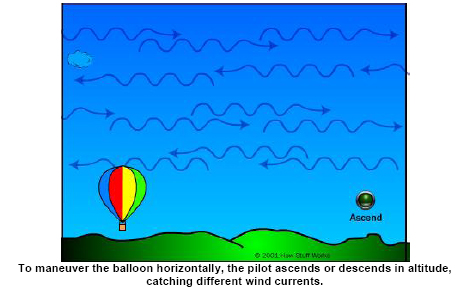
Based on a report by
Mr. Sachin Aggarwal
KVPY Summer Camp Invitee 2004